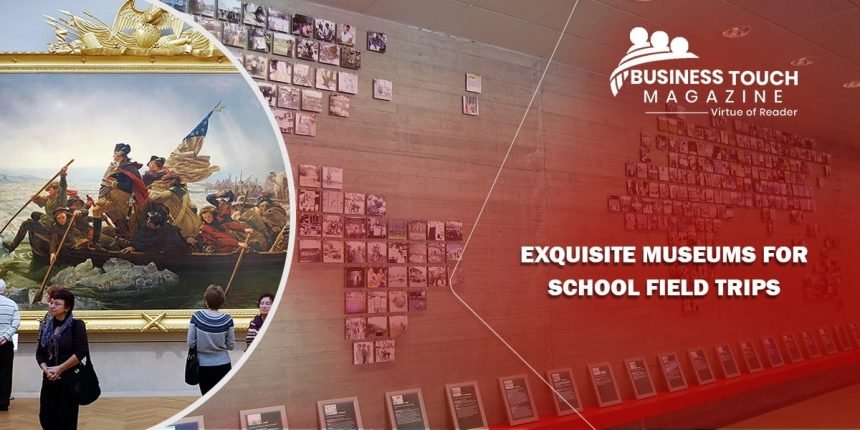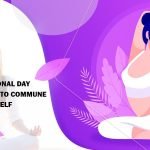Museums have a lot to offer outside the in-person experience, from comprehensive lesson plans and virtual field excursions to extensive digital archives and chances for professional growth.
It is estimated that the United States has more than 30,000 museums, many of which feature excellent but underused instructional resources for teachers.
Whatever your time commitment, whether it’s five minutes perusing an archive of an online museum or an hour perusing an educational webinar, these primarily free experiences and resources are all about you and your interests.
As a museum educator, I am always eager to assist teachers in using museum resources to enhance and supplement their classroom work.
If you’re looking for museums with outstanding resource centers that will pique your kids’ interest and encourage lifetime learning, consider the following:
1. THE METROPOLITAN MUSEUM OF ART, NEW YORK
From Vincent van Gogh’s Irises to Emanuel Leutze’s Washington Crossing the Delaware, this museum has hosted some of the most renowned visual art in existence.
A virtual visit to the museum isn’t the only way to experience it; its online presence is impressively extensive. The virtual tour is a great place to begin if you want to learn about a collection that spans more than 5,000 years of history. There is a wealth of information waiting for you to discover and use in your classroom as soon as you gain your bearings. As an example, much of the museum’s 500,000-piece permanent collection is now accessible online, along with libraries and research facilities.
It’s time to shine a light on some of our For grades 2–8, MetKids is a free, kid-centered resource. On the site, you may explore the interactive museum map, learn about the history of art, and see how the museum cares for its treasured objects via a series of movies.
Students may build catalogs, video essays, posters, and even T-shirts for their own use using works of art that are in the public domain, which is astonishing. Students may engage in a broader discussion on art and culture’s accessibility by repurposing, reimagining, and repurposing these pictures.
2. INDIANAPOLIS CHILDREN’S MUSEUM (INDIANAPOLIS, INDIANA)
There is a wealth of online resources at the Indianapolis Children’s Museum, including virtual independent study and professional development opportunities, in addition to the museum’s stunning exhibitions.
The “Measuring a Dino” lesson teaches students in grades K–2 how to use various measuring methods, while the “DNA—The Ladder of Life” lesson teaches students in grades 6–8 how to build a DNA model. Students may explore themes such as service learning, the civil rights struggle, and Native Americans and the natural world on the website’s wide course catalogue.
Hands-on games, focus questions, and an art project teach the value of communication and teamwork for grades 2–4 students in the Teenage Mutant Ninja Turtles classroom activity.
3. THE MUSEUM OF MEMORY AND HUMAN RIGHTS (SANTIAGO, CHILE)
The purpose of this museum was to shed light on the human rights atrocities perpetrated by Chile between 1973 and 1990, to memorialize the victims and their families, and to place this history in a larger perspective.
There are a lot of surprising and beneficial tools for instructors who want to make social studies topics more accessible to students throughout the world, such as Google Translate on the website. Many original sources, including letters written by prisoners while they were held, pictures, media articles, and films may be found in the extensive online collection.
The Interactive Monuments Exhibit features photos of memorials created in Chile as a means to memorialize victims and help mend the country’s shattered hearts. For a social science curriculum or a resource for Spanish or ELL students, these and other digital tools from the museum might be invaluable.
Teachers may use this lesson to increase their students’ sense of global citizenship and capacity to empathize with others by showing them how people throughout the globe not only experience comparable issues, but also work together to recover from and manage with loss and sadness. Public monuments honoring persons who have died as a consequence of violence are common in many places and cultures.
As part of a reflection assignment, older students might photograph or re-create local monuments for a class museum or internet gallery.
4. THE AMERICAN MUSEUM OF NATURAL HISTORY (NEW YORK, NEW YORK)
Digital programming at Ocean Life Museum has an intensity and charm not found anywhere else, and although it can’t replace the experience of standing in the Milstein Hall of Ocean Life and admiring the 21,000-pound blue whale sculpture hovering in midair, it may inspire new ways of looking at old concepts.
You’ll find a wide variety of continuing education opportunities here, from “Using Picture Books in Science Classrooms” to “Engaging in Citizen Science.” Complete curriculum; virtual field excursions; graduate-level courses; fellowship and grant possibilities; an extensive collection of papers; and other teaching materials. These tools, like the museum itself, are meant to aid visitors in understanding the world around them through the prisms of history and science.
With games, films, hands-on exercises, and tales on subjects like anthropology and microbiology in mind, OLogy is a website and iPad app for students in grades K–5.
Using resources from the AMNH website, try setting up learning stations where each of your pupils has the chance to connect to something that interests them.




